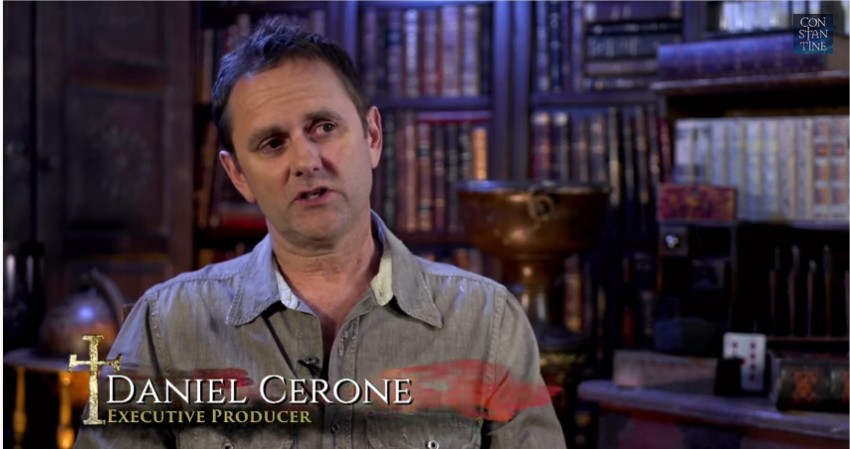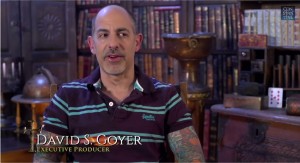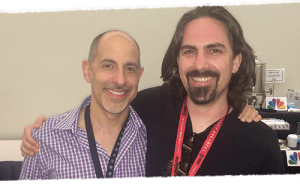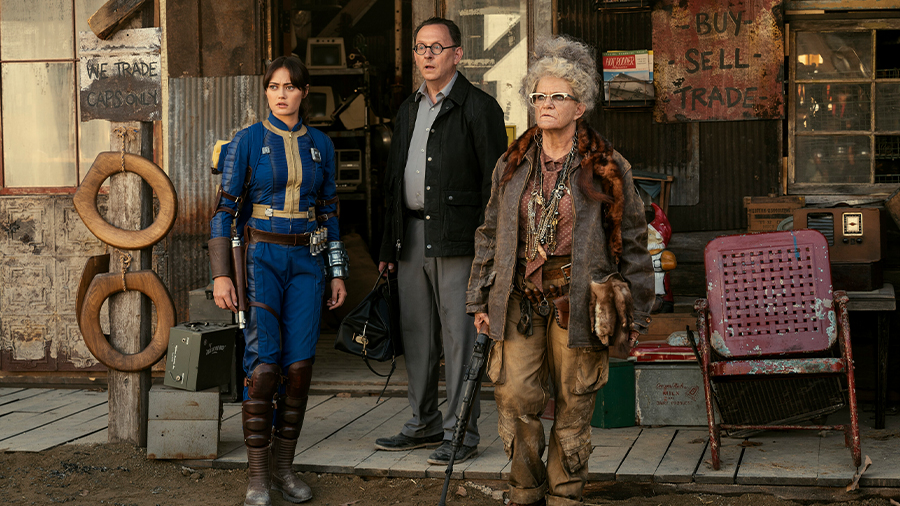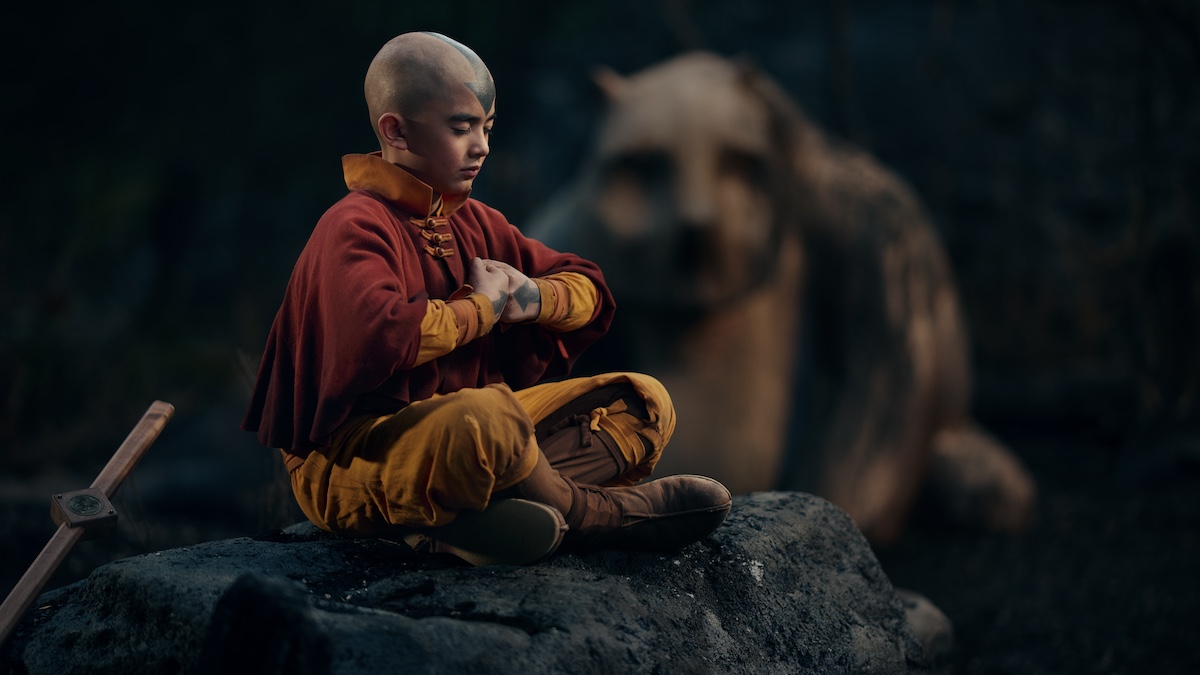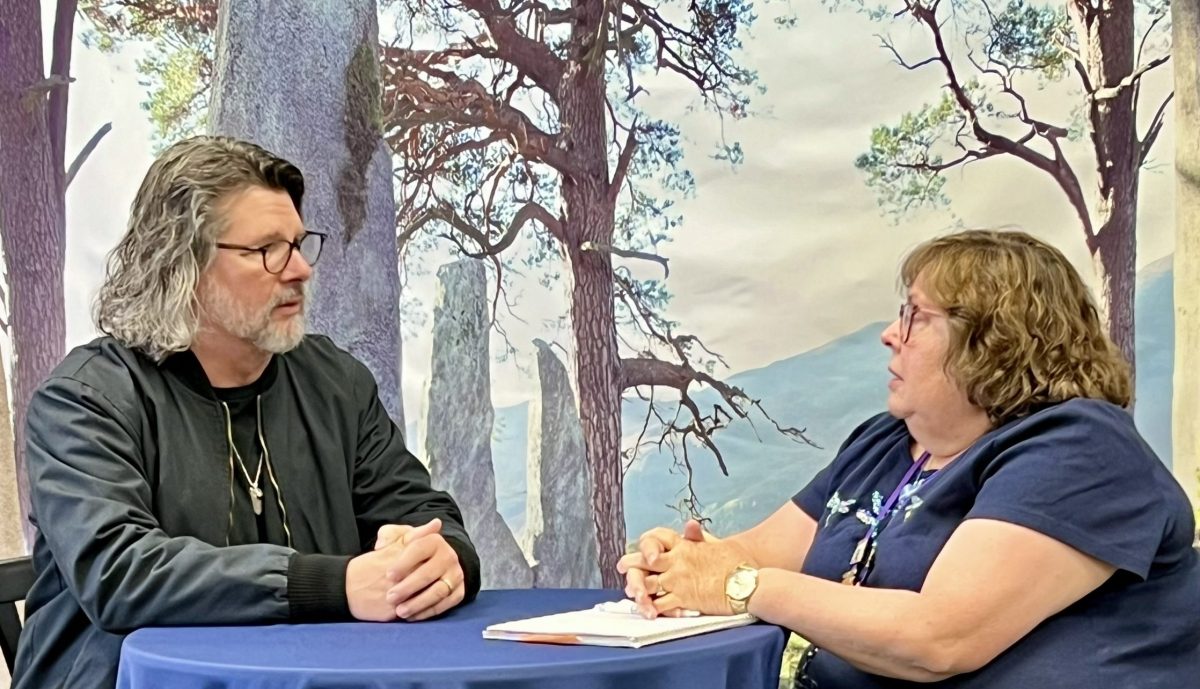Constantine’s creators and executive producers David S. Goyer and Daniel Cerone talked with reporters the other day about this history of the project, keeping non-comic book fans engaged, potential censorship by NBC, and other topics. Here’s part 1 of the discussion. Be sure to check back Saturday and Sunday for Parts 2 and 3.
I had the chance to ask David and Daniel about writing for those, like me, who had not heard of Constantine before the TV show.
Me: …I’m not, you know, one of your comic book fans… you’ve got The Devils You Know section of the Web site and that kind of thing; what are you doing to really help the non-comic book fans? How could they best get into the show because you’ve got to have – and you talked about this a little bit before, you’ve got to have that contingent in order to make this show a success on the network.
Daniel: Yes. Look, I actually think in the whole wide spectrum. I actually feel like we’re tipping closer to creating the show for the non-fan and the fan, truthfully, because there isn’t a single episode or story we tell where we’re just not seeing down to tell a coherent story and every week introduce a danger and characters that you can relate to and care for and, at the same time, you know, we’re trying to spin out this, you know, the central character of John Constantine as someone who is full of aches and pain and guilt and torment and is going about doing something because he feels personally compelled to do it. I feel like everything we’ve served and talked about this phone call is, you know, it is a little inside baseball. I mean, for anybody who knows of this, you don’t have to know of the character Papa Midnite. You don’t have to know about The Newcastle Crew. You don’t have to know about Felix Faust or the Doctor Fate Helmet or any of these elements that we’re using to enjoy the show. I mean, every week, we’re just trying to tell the most sort of honest and accessible and humanistic stories that we possibly can.
But there’s an added layer on top of that for the comic book fan where if you know the world, if you know John Constantine, if you know Hellblazer, if you know some of the iconic images and people on the DC world, it’s value added. It’ll provide that much more entertainment and fun hopefully.
David: And I would say one more thing, like, let’s talk about, for instance, the introduction of Jim Corrigan, who’s a character the comic book fans will know. You know, the working rule of thumb that we’ve gone by is, you know, as fans, it’s exciting for us to introduce a character like that and we know it will be to the comic book fans but…
Daniel: Tell Erin who he is for some…
David: I will in a second. He becomes another DC character called The Spectre as supernatural figure ultimately. But the point is it’s fun for us as fans to say “Hey, let’s get this character in there.” But we don’t want to do it just as a stunt cast and we won’t do it unless it’s organic to the story and we can introduce the character in a way that people who never read the comics will understand who he is and won’t be lost without his back story. So we have to make sure that every time we introduce a character or a plot element like that, we can do it in a way that stays true to the source material but doesn’t alienate the broader audience and they feel like they’re missing out or they don’t understand the story because they haven’t read the comic books.
Daniel: And, you know, Jim Corrigan is a great case study. I mean, if I can sort of present for an instant, like, how the Jim Corrigan character came into being on our show, for (the episode) called “Danse Vaudou.” It airs not this Friday but a week from Friday (Nov. 21). We did an episode where we’re like all right, we want to do – let’s start it with urban legends. And like, look, there’s a perfect example. Everybody does their urban legends or like “Let’s sort of do just” – but we’re not going to call them urban legend. Let’s just do – let’s just bring some urban legends to life and let’s do serve a thematic urban legend episode.
And we basically decided to do three of them. One was like the vanishing hitchhiker. One was the slit-mouthed woman. That’s like the woman who carries a surgical mask in Japan. And the third was – what’s that third character? There’s the hitchhiker, the woman – oh, it was the golden – what is it, the golden – it’s the golden paw. What is it? The monkey’s paw basically…
David: Yes, yes.
Daniel: Somebody’s loved one comes back. So we decided to have three ghost stories and all based loosely on those urban legends. And they all end up being ghosts that are brought to life by Papa Midnite unknowingly because of the rising darkness. So within the context of the episode, we realized we needed to a cop character. There is a cop that, you know, was coming across various dead bodies that were connected to this ghost. And so we’re like, “All right, we’re going to expose a police officer to the supernatural world here.” And so right away we’re like “All right, is there anyone in the DC world that we can plug into that could, you know, sort of” – again, it’s a value added. Kill two birds with one stone and we thought “Well, Jim Corrigan is this cop, very much like Constantine, kind of takes the law in his own hands, you know, really hard charging, will do anything, you know, for the arrest and he ultimately is killed and comes back as The Spectre character.” We’re like “What if we meet him now as a cop. He can come into this case. He can see those” – you know, we’re sort of seeing like a bit of the origin story of Jim Corrigan where he sees the supernatural world open to him for the first time.
And so, you know, A, we’re introducing Jim Corrigan; B, we’re giving John Constantine a friend on the force for future episodes, and that’s just sort of how that happened. But it came from very organic story, different place. It wasn’t about servicing DC fans. It was literally about just trying to tell a good story.
Q Just another one of the characters for the show really for me so far is the music. Can you talk about working with Bear McCreary, about the inclusion of kind of tech specialist in the funk music so far?
David: Bear – this is the third time I’ve collaborated with Bear. Most recently, he does the score for my other show, “Da Vinci’s Demons.” He actually won the Emmy last year for it. And so as soon as Constantine, the pilot was going, I think I just said to everyone Bear is doing it. There’s no – there’s not going to be a conversation. He’s doing it. Bear is also a huge, huge Hellblazer fan. And one of the things that’s great about Bear is he’s incredibly versatile. I mean, his score for “Walking Dead” is nothing like his score for this. There’s nothing like a score for “Battlestars,” nothing like “Da Vinci’s Demons.”
We also used, which is unusual, a full orchestra on the show. A lot of people just go with sense and, you know, might have one or two instruments. We have a full orchestra. And if you want to handle the funk thing, Daniel, it’s sort of part and parcel. That speaks to a character when John Constantine was introducing the AAP. He was part of that funk scene. He used to be part of a funk band, which we referenced in the last episode (The Mucous Membranes) and we thought even though it’s bit anachronistic, it would be fun to still utilize a lot of that funk music whenever we’re using, you know, source pieces.
Daniel: But, you know, look, here’s the deal. I mean, John Constantine was funk. I mean, it’s as simple as that. I mean, he’s – you know, it just embodies his, you know, that of rebellious ecstatic, free-thinking completely embodies who John Constantine is and, look, I have a 13-year-old daughter who just – that’s all she listens to is funk. So, I mean, I don’t even think it’s throwback really. I think it’s just, you know, it’s such a part of sort of culturally now, you know, the music scene and there’s so many shoots of it. I just think it’s, you know, so to bring that into the show as a flavor just felt like a really honest thing to do.
Like David said, look, when John left home in the comics in his timeline, I think he went straight into the London, you know, underground funk scene and yes, that’s all long gone but that doesn’t mean that, you know, as a character, that can’t be a music and that can’t be his musical style because it just feels honest to who he is. And for us, it’s a lot of fun to try to find cuts that we can use for the show.
Follow me on Twitter: @ErinConrad2 and @threeifbyspace.net
Subscribe to threeifbyspace or Like us on Facebook for instant notice of new posts

